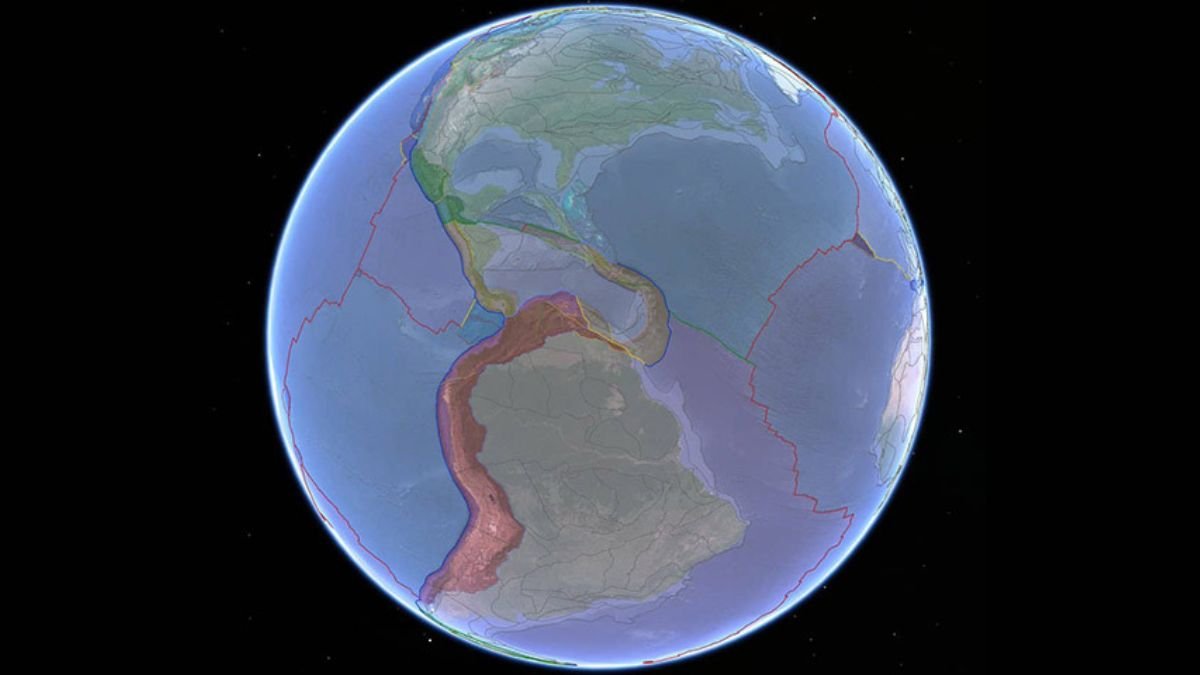A study published last year in the journal Earth-Science Reviews presented a revolutionary global compilation of the boundaries of all active tectonic plates on Earth, separated by “geological zones” in Shapefile format files. The database, currently hosted on GitHub, is available to the entire earth science community.
According to the research, The goal of creating this new tectonic model of the planet was to share accurate spatial models of tectonic plates and geological terrains. It allows “the analysis and interpretation of a wide range of geological data and the development of physical and compositional models of the lithosphere.” Dynamic consolidation classifies data by attributes such as crust type, plate, region, and orogeny (recent event).
The study’s main author, Derrick Hasterok from the University of Adelaide, Australia, offers some highlights of the study on his LinkedIn page:
- 90% of Quaternary earthquakes and 80% of volcanoes are explained by the new model.
- 16% of the Earth’s surface lies within the plate boundary zone.
- 57.5% of the earth’s crust is oceanic and the rest is terrestrial.
Map models for comparative studies of plate tectonics
To understand the complex structural architecture of plate tectonics, it is necessary to evaluate changes in rocks on the Earth’s surface over time. This means knowing the chemical and physical properties of the surrounding lithosphere. To achieve this, two main models are introduced in the study:
- Global Geological Provinces: These spatially precise maps encompass a consistent set of key geological features that are considered fundamental in global comparative studies and reliable plate reconstructions.
- Current board limits: This model improves on other already established models by combining geophysical, geochemical and geochronological features. According to the study, the aim here is to expand the tectonic boundaries to approximately 2.3 billion years ago and add different geological interpretations and observations.
How important is the new map of Earth’s tectonic plates?
New digital plate models are becoming the standard for classifying geological data in various databases around the world. Since they are all free and open source, it is possible to update them and introduce continuous improvements as researched by the earth science community. According to the authors, the aim is to foster an adaptable and interactive environment for a better understanding of our geological history.
One of the big news in this sense is the transition from traditional raster maps (where each pixel represents a cell in the grid). for vector format of shape files. In practice, this change allows for a more nuanced understanding of the Earth’s geological fabric; because in this new configuration each polygon, line or point can represent separate geographical elements (roads, rivers, borders) in addition to geological data.
To facilitate sharing, the files were also published in formats compatible with Public Mapping Tools, a software that manages geographic data, in addition to GoogleEarth.
Did you like the content? So stay up to date with new studies like this one at TecMundo and take the opportunity to learn how current earthquakes could be echoes of tremors more than 100 years old.
Source: Tec Mundo
I’m Blaine Morgan, an experienced journalist and writer with over 8 years of experience in the tech industry. My expertise lies in writing about technology news and trends, covering everything from cutting-edge gadgets to emerging software developments. I’ve written for several leading publications including Gadget Onus where I am an author.












